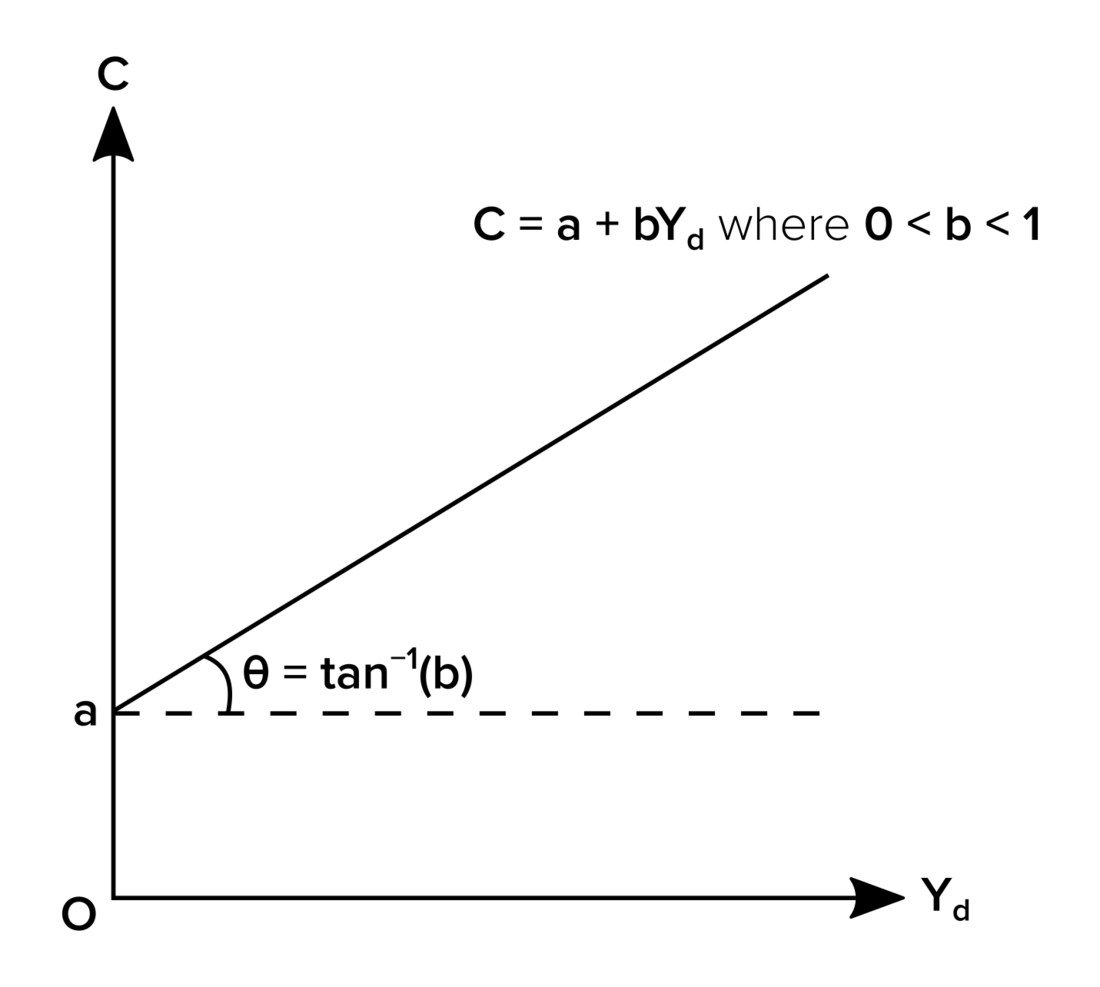Top Qs
Timeline
Chat
Perspective
Consumption function
Economic model relating consumption and disposable income From Wikipedia, the free encyclopedia
Remove ads
In economics, the consumption function describes a relationship between consumption and disposable income.[1][2] The concept is believed to have been introduced into macroeconomics by John Maynard Keynes in 1936, who used it to develop the notion of a government spending multiplier.[3]

Remove ads
Details
Summarize
Perspective
Its simplest form is the linear consumption function used frequently in simple Keynesian models:[4]
where is the autonomous consumption that is independent of disposable income; in other words, consumption when disposable income is zero. The term is the induced consumption that is influenced by the economy's income level . The parameter is known as the marginal propensity to consume, i.e. the increase in consumption due to an incremental increase in disposable income, since . Geometrically, is the slope of the consumption function.
Keynes proposed this model to fit three stylized facts:[5]
- People typically spend a part, but not all of their income on consumption, and they save the rest. They typically do not borrow money to spend, or borrow money to save.[6] This fact is modelled by requiring .
- People with higher income save a higher proportion of the income. This is modelled by decreasing with .
- People, when deciding how much to save, are insensitive to the interest rate.[6]
By basing his model in how typical households decide how much to save and spend, Keynes was informally using a microfoundation approach to the macroeconomics of saving.[7]
Keynes also took note of the tendency for the marginal propensity to consume to decrease as income increases, i.e. .[8] If this assumption is to be used, it would result in a nonlinear consumption function with a diminishing slope. Further theories on the shape of the consumption function include James Duesenberry's (1949) relative consumption expenditure,[9] Franco Modigliani and Richard Brumberg's (1954) life-cycle hypothesis, and Milton Friedman's (1957) permanent income hypothesis.[10]
Some new theoretical works following Duesenberry's and based in behavioral economics suggest that a number of behavioural principles can be taken as microeconomic foundations for a behaviorally-based aggregate consumption function.[11]
Remove ads
See also
Notes
Further reading
External links
Wikiwand - on
Seamless Wikipedia browsing. On steroids.
Remove ads









